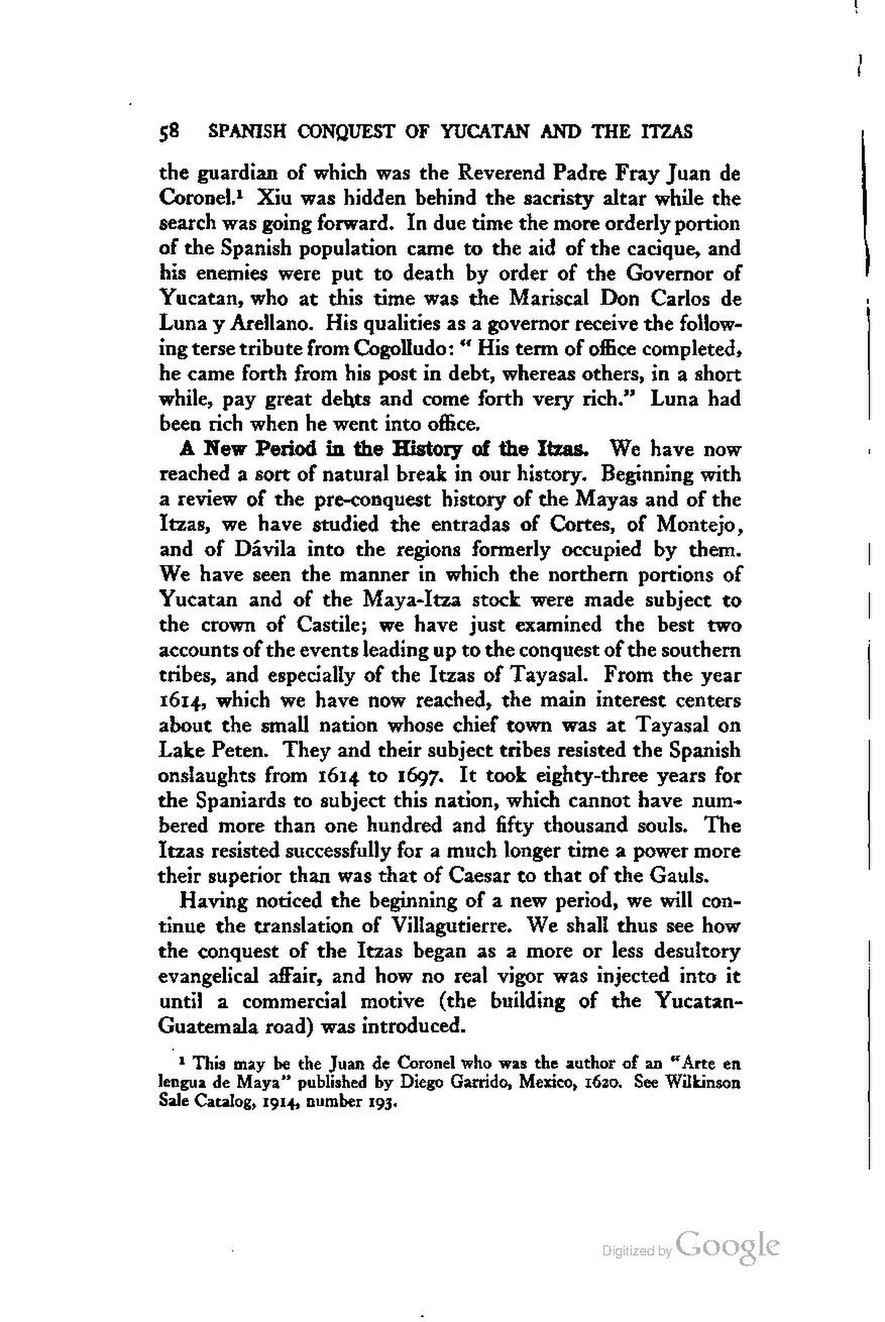the guardian of which was the Reverend Padre Fray Juan de Coronel.[1] Xiu was hidden behind the sacristy altar while the search was going forward. In due time the more orderly portion of the Spanish population came to the aid of the cacique, and his enemies were put to death by order of the Governor of Yucatan, who at this time was the Mariscal Don Carlos de Luna y Arellano. His qualities as a governor receive the following terse tribute from Cogolludo: “His term of office completed, he came forth from his post in debt, whereas others, in a short while, pay great debts and come forth very rich.” Luna had been rich when he went into office.
A New Period in the History of the ltzas. We have now reached a sort of natural break in our history. Beginning with a review of the pre-conquest history of the Mayas and of the Itzas, we have studied the entradas of Cortes, of Montejo, and of Dávila into the regions formerly occupied by them. We have seen the manner in which the northern portions of Yucatan and of the Maya-Itza stock were made subject to the crown of Castile; we have just examined the best two accounts of the events leading up to the conquest of the southern tribes, and especially of the Itzas of Tayasal. From the year 1614, which we have now reached, the main interest centers about the small nation whose chief town was at Tayasal on Lake Peten. They and their subject tribes resisted the Spanish onslaughts from 1614 to l697. It took eighty-three years for the Spaniards to subject this nation, which cannot have numbered more than one hundred and fifty thousand souls. The Itzas resisted successfully for a much longer time a power more their superior than was that of Caesar to that of the Gauls.
Having noticed the beginning of a new period, we will continue the translation of Villagutierre. We shall thus see how the conquest of the Itzas began as a more or less desultory evangelical affair, and how no real vigor was injected into it until a commercial motive (the building of the Yucatan-Guatemala road) was introduced.
- ↑ This may be the Juan de Coronel who was the author of an “Arte en lengua de Maya” published by Diego Garrido, Mexico, 1620. See Wilkinson Sale Catalog, 1914, number 193.
